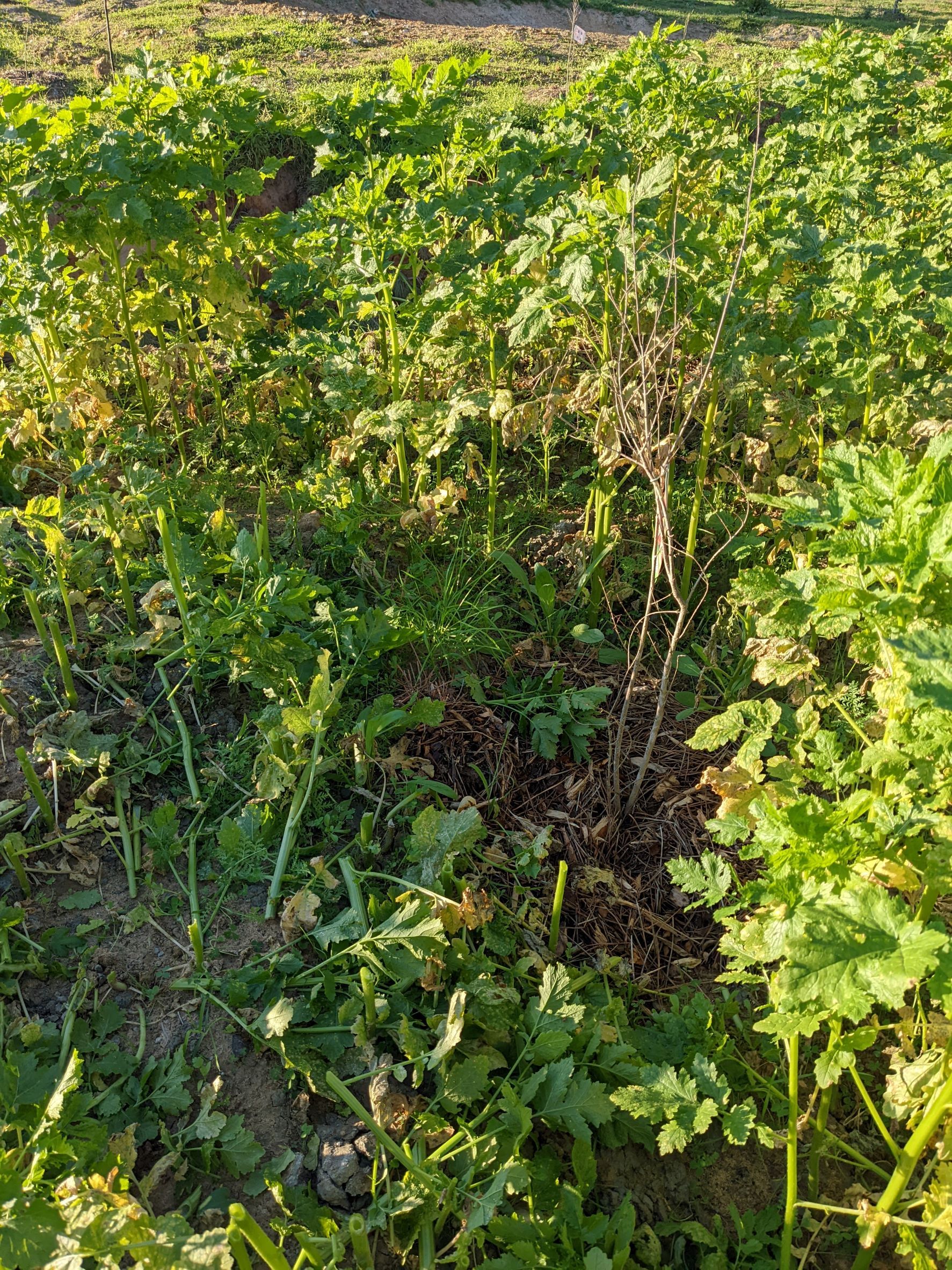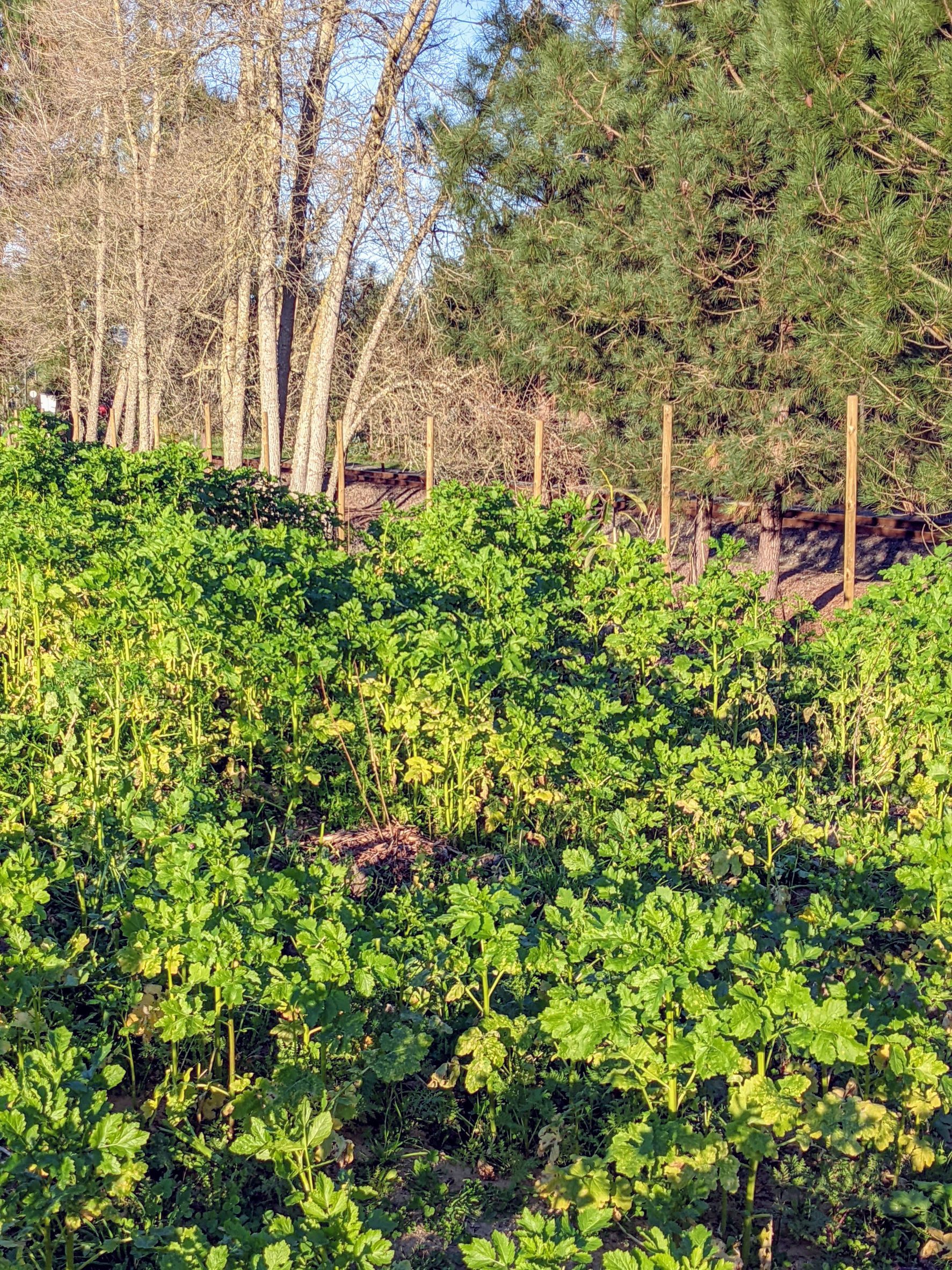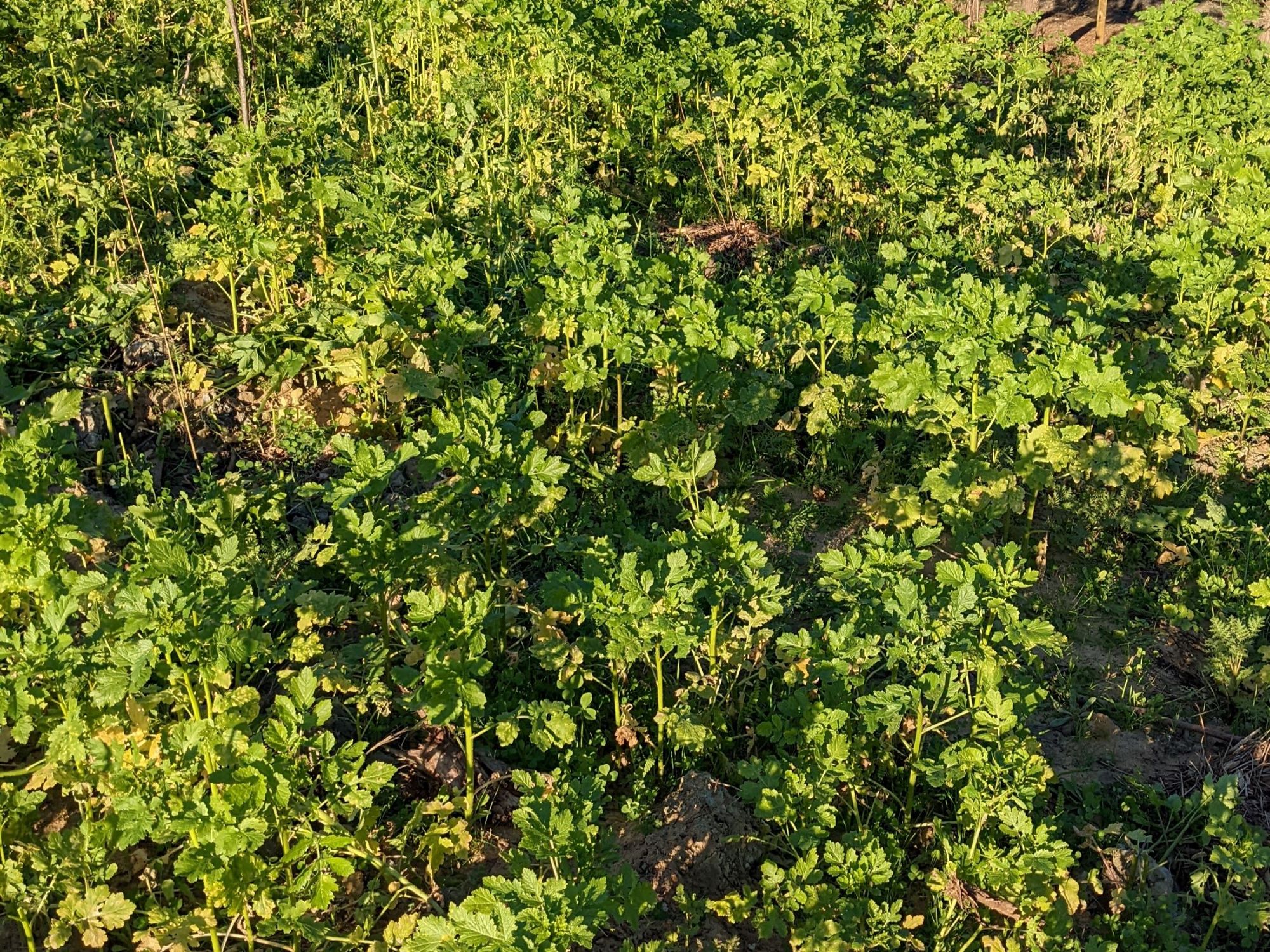After we planted roughly 1000 trees in the fall, and seeded plenty of cover crop everywhere, we are now faced with this incredible growth.
It is winter, and we are going through the coldest month of the year. We had some frost, and the north wind leaves no doubts about the season we are in.
Yet, many of the trees have grown, some are producing leaves. More than that, the cover crop has grown tremendously, creating a lot of biomass and… shade! It is growing so much that it became taller than the young trees it is surrounding, leaving them shaded for most of the day.
Because the trees are already sunbathing very little due to the short days, this was an issue. So, we were surprised to find ourselves needing to chop and drop heavily at this time of the year.
It is a multifunction activity that I simply loved: using a pair of long pruning scissors, I went outside, got some vitamin D sponsored by the sun, took care of the trees, fertilized the soil, and got a good workout. The latter was so intense that my hands and forearms were sore for two days – a sign that I should also do this type of exercise more often and develop my grip strength.
So, here is the procedure we followed: When the sun was already low in the sky, casting the longest shadows, we grabbed the necessary garden tools. For us, that meant rubber boots, gloves, and pruning scissors. A pocket knife and string would also have been good in case we found any plant needing a tutor adjustment (we did).
To the south and south west of each tree, we cut the cover crop. The tallest plants got several cuts along their stem so that each bit wasn’t longer than 20 cm. This was to help the breakdown process, especially given the local climate. The roots were left undisturbed. Around each tree, we cleared the mulched area by removing any bigger plants that had managed to root there, and readjusted the mulch material when required.


Everywhere else, we let the cover crop as it was. In some areas, where it was getting too dense, we chopped a little. We still left plenty of plants, including some with flowers. This allows them to go to seed, and feed the pollinators through this harsh time of the year.
The result: when you look at it from some distance, it still looks like a dense green patch. There is a lot of life. When you come closer, you can tell that all the young trees are still getting plenty of light and space to grow. And the ground? Fully covered with organic matter.


